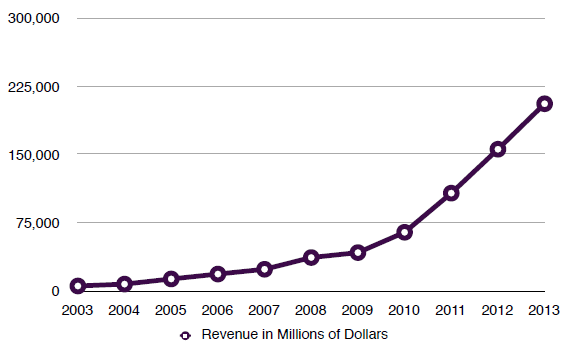 This is the third post in a four part series. Start at the beginning with: Whimsical Branding Obscures Apple’s Troubled Supply Chain.
This is the third post in a four part series. Start at the beginning with: Whimsical Branding Obscures Apple’s Troubled Supply Chain.
I cannot watch this 2003 Apple iPod commercial without shaking my hips, even in the midst of delivering a lecture or conference presentation. In fact, I struggle deeply to refrain from jumping around in an ecstatic dance of joy.
This commercial moves me. But, why? Yes, it has rocking music and popping colors. But, I suspect, more importantly, it has hip young things gyrating to the music, lost in the euphoria provided by an iPod and earbuds, with seemingly no cares in the world. For four years Apple aired a string of these, which became known as the “Silhouette” commercials, each featuring a different soundtrack and style of dance. In my previous posts, I’ve focused on two important elements of Apple’s brand promise: whimsicality and sentimentality. In this post I spotlight another key finding from our research: the association of Apple products with coolness, hipness, youth, and a carefree attitude.
This trend was introduced into the brand by the iPod commercial above, and it continues to be an important part of Apple’s brand promise today. Similar qualities are present in this ad from early 2012, titled “Road Trip,” which showcases the utility of the voice-activated assistant, Siri, on the iPhone 4S:
And, early this summer, Apple released a commercial that emphasizes the musical enjoyment that an iPhone can provide. The ad, which seems a re-imagining of the “Silhouette” campaign, depicts these young, fit, and beautiful iPhone owners as indulgent in their passions, carefree, too cool to care about dancing in public, and thus hip, energetic, and fun to be around.
These ads and the many like them in Apple’s oeuvre suggest that the product makes users spontaneous, proud to embrace their unique individuality, and happy to “let their freak flag fly,” so to speak. In this case, the brand promises uninhibited enjoyment. With their bouncing, lithe bodies and shiny, happy faces, these Apple users are the epitome of cool in today’s American culture.
Like the promise of playfulness, and sentimental connection to others, this aspect of Apple’s brand promise acts as a powerful fetish, in the Marxist sense, that obscures the troubling labor conditions and environmental pollution in the company’s Chinese supply chain. Who has the presence of mind to think about global social, economic, and environmental problems when they are busy rocking out, road-tripping, and dancing in the shower?
Next: Apple’s Seductive Brand Promise of Cultural Capital & Social Mobility.
Nicki Lisa Cole, Ph.D. is a lecturer in sociology at Pomona College. She studies the connections between consumer culture, labor, and environmental issues in global supply chains. You can follwer her at 21 Century Nomad, visit her website, and learn more about her research into Apple here.









